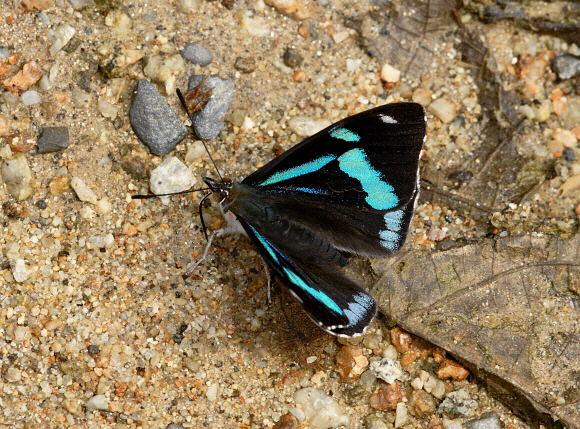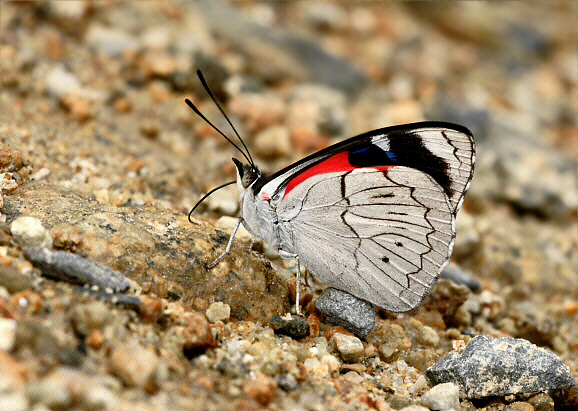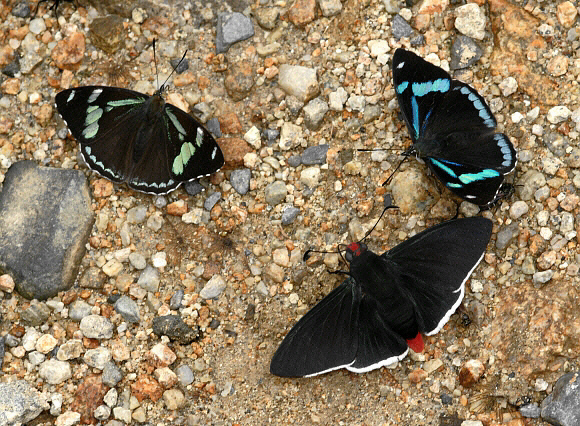 Perisama dorbignyi jurinei male, Manu cloudforest, 1700m – Adrian Hoskins
Perisama dorbignyi jurinei male, Manu cloudforest, 1700m – Adrian Hoskins
Introduction
The Biblidinae are recognised by their diverse but simple and colourful patterns. In the neotropics their representatives include the Callicorina – a subtribe of small-medium sized butterflies, marked on the uppersides with bands of metallic blue or green. The Callicorina includes the genus Diaethria, instantly recognised by the 88 or 89 markings on the undersides, and Perisama, which are similar on the uppersides, but have plain undersides marked only with dots and wavy lines.
The genus Perisama comprises 32 known species. They are medium-sized butterflies with blackish uppersides, marked with diagonal bands of turquoise or green on the forewings. Many species also have a band of the same colour around the hindwing margins. Perisama species are found mostly in the Andean cloudforests at altitudes between 1200-2400m, but there is also a species endemic to Costa Rica, and another endemic to Mexico.
Some authorities consider jurinei to be a subspecies of dorbignyi. The illustrated insects have been identified as jurinei by Perisama expert St�phane Attal, who regards jurinei as a full species.Perisama jurinei is found in southern Peru and Bolivia.
 Perisama dorbignyi jurinei male, Manu cloudforest, 1700m – Adrian Hoskins
Perisama dorbignyi jurinei male, Manu cloudforest, 1700m – Adrian Hoskins
Habitats
This is a high altitude Andean cloudforest species, found at elevations between about 1200-2200m.

Perisama dorbignyi jurinei male, Manu cloudforest, 1700m – Adrian Hoskins
Lifecycle
To be completed.
Adult behaviour
Like other Perisama species, the butterflies spend the early mornings and late afternoons settled high in the trees, but become very active in mid-morning, dashing back and forth between the tree tops and the surface of the ground.
This species is usually seen in one’s and two’s, nearly always in the company of other Perisama species, visiting damp ground close to human habitations. The butterfly is very active in hot sunshine, flitting rapidly back and forth just above the ground, stopping momentarily here and there on logs, stumps, rocks, wood-shavings and other objects.
In cloudy weather the butterflies are loathe to leave these favoured spots, and will bask for long periods on the ground, awaiting the return of sunshine. Only the threat of rain causes them to abandon their haunts and return to the nearby forest.
 Perisama canoma cotyora (left) with Perisama dorbignyi jurinei (right) and Pyrrhopyge phidias
Perisama canoma cotyora (left) with Perisama dorbignyi jurinei (right) and Pyrrhopyge phidias
